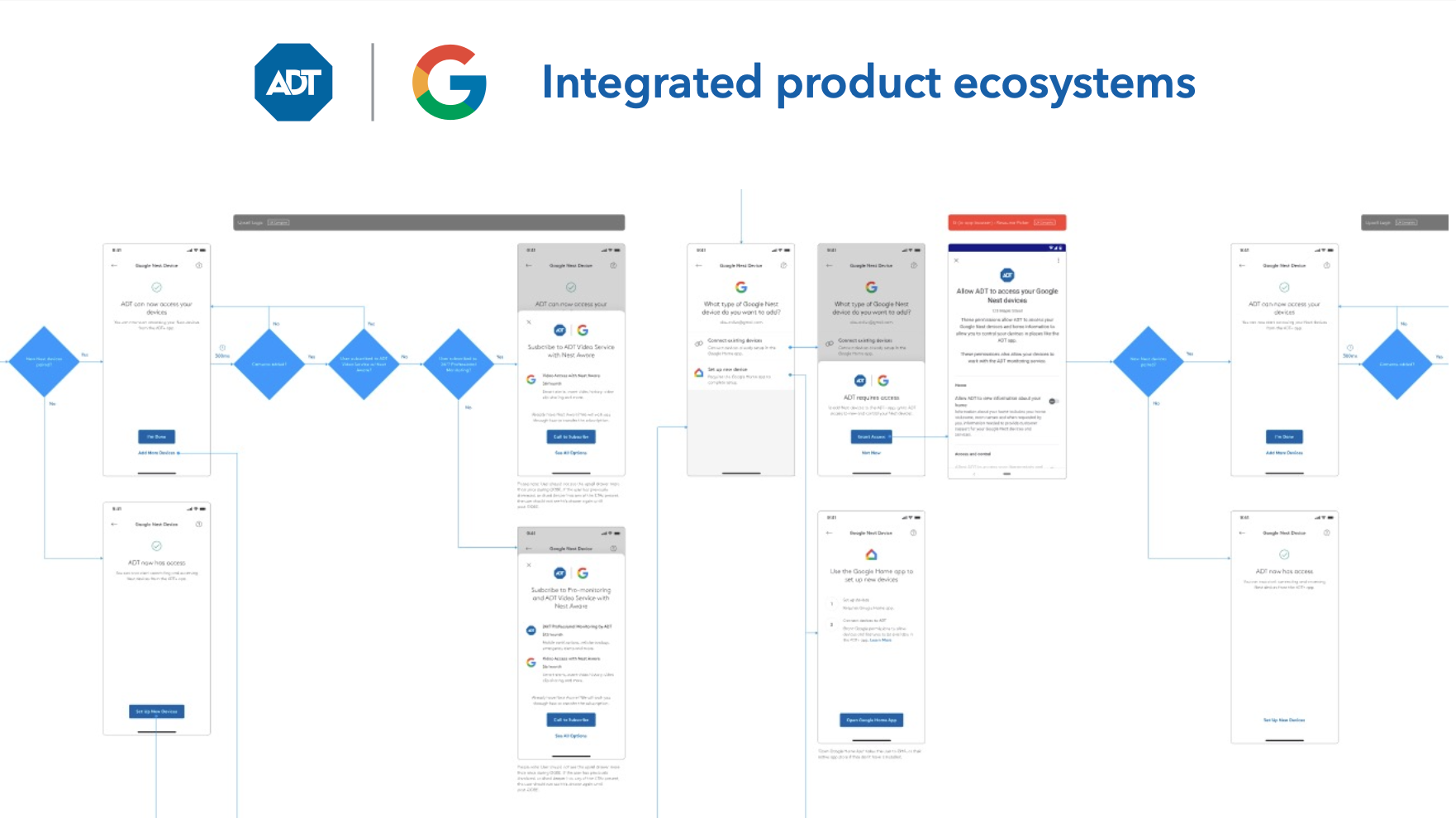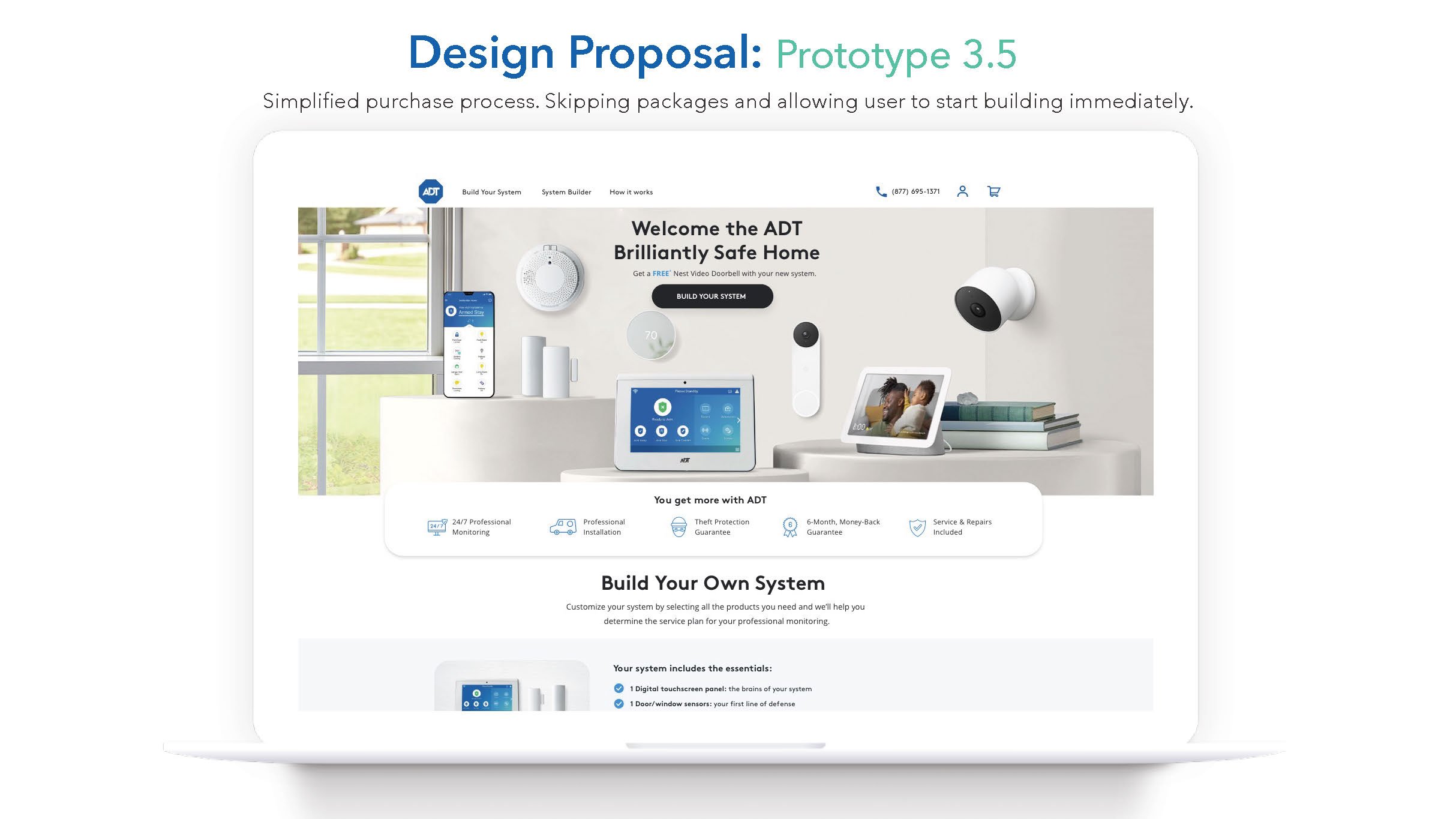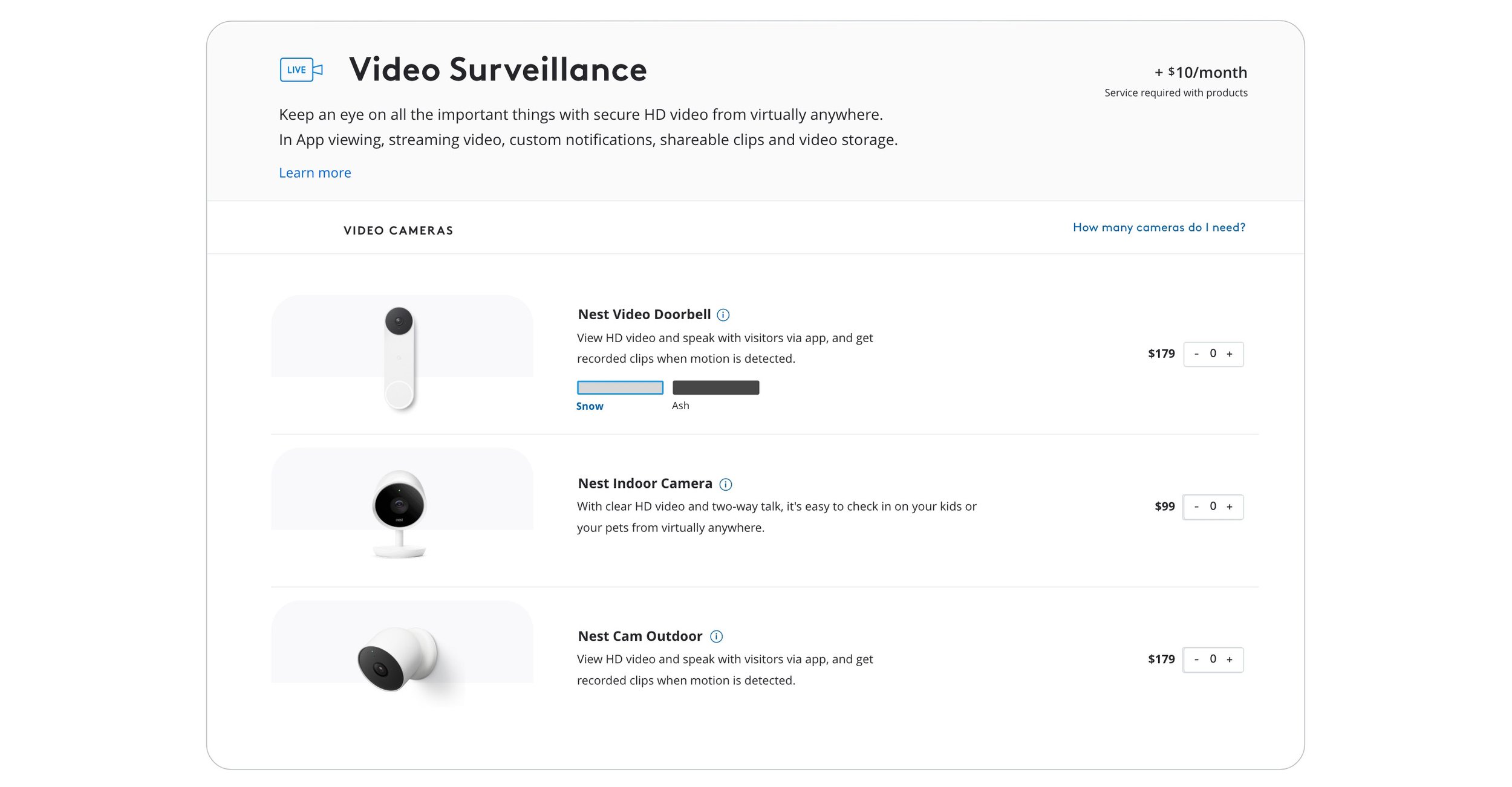DESIGN SYSTEM AND BRAND INTEGRATION
My team leads the thinking and product strategy behind the ADT and Google partnership which leverages the magic of Google and the Security and trust of ADT. I drive the design and research process in the ecosystem of connected products and the integration with Google’s NEST ecosystem. I am hands-on in prototyping, research, user testing, product optimization, roadmaps, and team scrums. Bridging cross-functionally teams, from eComm to Product, and on a multitude of touchpoints in the end-to-end digital experiences. The first thing we did was update the Design System and build the eCommerce experience.
Initial Objectives and Challenges
As a 145-year-old enterprise, ADT has built a legacy operation driven by phone and field sales channels. Despite this well-established history, e-commerce was not a well-established sales channel. ADT initially adopted the approach of using the website to drive prospects to our call centers. E-commerce was an afterthought, and ADT was reluctant to assign design and development resources to this unproven sales channel. With the Google partnership, we needed to pivot and start to provide eCommerce solutions for a new customer segment. eCommerce would no longer be de-emphasized on the site, we would transition away from focusing on the “free quote” CTA’s to phone sales. eCommerce represented less than 1% of ADT’s total sales in 2021. ADT established the objective of pivoting to eCommerce sales without cannibalizing our traditional sales channels (inbound and outbound calls). I worked to shift ADT’s approach to our website from a business-centered to a user-centered approach. In order to do so, we had to identify existing pain points for e-commerce prospects in order to develop solutions.
Proposal
This prototype responds to the insight that products must be clearly associated with the services they provide. Previous findings indicated a preference for a product-driven (vs. services-driven) purchase flow. In this modified purchase flow, the PLP includes all security products but is organized visually by monitoring/service category and customers can opt-in to services by selecting the products they want, eliminating the cognitive load required with selecting the right package. It also provides a low initial cost that determines the starting point with every decision afterward being an opt-in decision making the final price clear as to what it truly contains and eliminating the initial price hesitancy.
Methodology
Remote moderated user interviews and prototype testing (n=9)
Prototype Overview
To create a better association between the products and the monitoring services where each product is within service tiers that help illustrate the service and the price associated with it. This gives users the choice to opt into any service by selecting the product shown within the tier. This approach helps users understand their monthly RMR and everything that is provided in the monthly service charge. The ADT Warranty program is also stripped out of the price and presented after the system is built on an interstitial page as users are proceeding to check out. Ultimately this will help reduce the initial price hesitancy and allow users to understand their added costs giving them the choices and the knowledge to make the customizations that are right for them.
-Essential Monitoring shows a monthly RMR of $25 and the base equipment of $245.
-Smart Home Automation shows the additional (+$4) monthly RMR required with smart products.
-Video Surveillance shows an additional (+10) monthly RMR required with any video camera.
Take a look at the prototype for user testing
Service Tiers
With the choice to opt into any service by selecting the products that interests users.
The ADT Warranty Plan allows us to lower the initial price and gives users the option to add it to their service. This address the issue of price hesitancy and adds clarity to what you get if you decide to opt-in. Users had a hard time knowing this was included in their subscription and it’s a great benefit to have.
KEY TAKEAWAYS
People entered with a positive acceptance of cost of service. Price hesitancy was diminished.
All participants found the revised purchased flow appealing, intuitive, simple, and engaging.
Participants clearly understood the relationship between products and services when products were presented in service categories.
Participants appreciated the transparency in the pricing and the pricing structure, notably lacking in their previous shopping/research for home security.
The location of the warranty plan on an interstitial page during checkout increased engagement.
Updates to website navigation
We started directing traffic to the eCommerce experience with several CTA’s in different location most notably on the hero of the homepage.
THE BUSINESS IMPACT
January to July 2022:
Record Sales volume for ADT.com with 10,666 Sales (up 17% YoY!!!)
470 eCommerce Sales! (Up 49% MoM and 618% YoY!!!)
Our e-commerce sales in 2022 have gone up by 350% compared with a year ago, without negatively impacting our inbound and outbound calls.
Our long-term goal is reaching within 3 years 30% of all sales coming from our eCommerce experience.
USER EXPERIENCE IMPACT
The impact on the user experience has been to refocus ADT’s website from meeting business goals to meeting customer/user goals.
The addition of information about the features and benefits of ADT’s products and services has led to increased engagement and increased conversion from users who engaged with this content.
Increased visibility of the online store represents our insights gained from UserTesting that many users prefer a self-service and fully online purchase experience.
Price transparency in the checkout summary allows users to understand both the total cost as well as the difference between the pricing of equipment and monthly services
We have significantly grown ADT’s research IQ as an organization.
We are building a collaborator network of participants within UserTesting that will be shared by cross-functional teams on the website and app product design team. A parallel research program of interviews with recent online purchasers continues to feed this network of participants.
Sharing metrics and sizzle reels from user interviews has become a norm for disseminating important learnings across the organization.
We have made it common practice to use Full Story behavioral analytics along with Google Analytics.
A/B testing has been established with Optimized and we currently run tests multiple tests per quarter.
CONTINUE VIEWING PROJECTS














